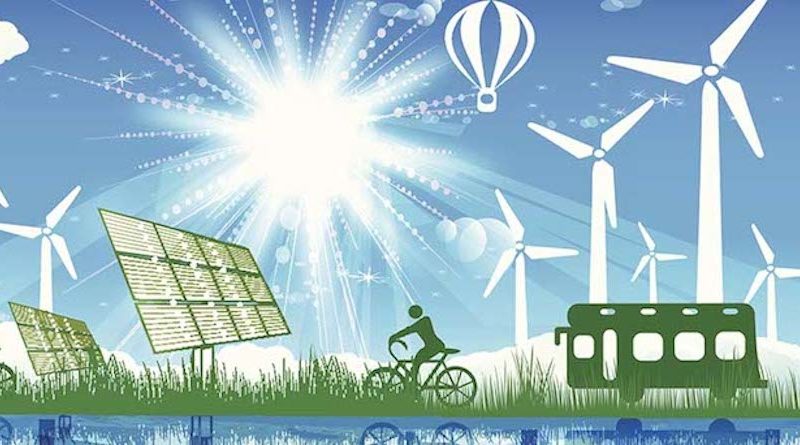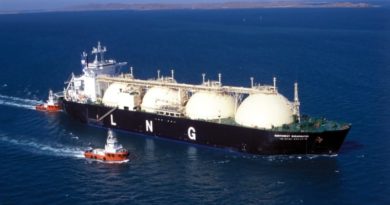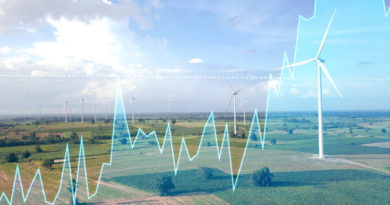
A new ambition for energy efficiency in Europe
To address the biggest challenge of our time, climate change, the EU has decided to lead the worldwide clean energy transition.
To do so, it is clear that, alongside the integration of renewable energy sources into the mix, energy efficiency should be one of the major drivers towards a sustainable society, one that will unlock the true potential of the energy transition.
Let us recall that the cheapest, cleanest, and most secure form of energy is the one we do not use, the one that we save.
That is why energy efficiency measures are the most cost effective way to support the shift to a low-carbon economy and, in the process, boost investment, growth and employment opportunities in Europe.
These past 10 years, the EU has already implemented a number of solid measures to improve energy efficiency in all sectors notably through the existing Directives on Energy Efficiency and on the Energy Performance of Buildings, as well as important rules on Ecodesign and Energy labelling.
These measures have contributed considerably to a reduction in EU energy consumption and helped consumers save energy and money.
We are very close to achieving our self-imposed 2020 target of 20% in energy efficiency savings across the EU.
However, now is not the time for complacency: we need to accelerate our efforts considerably and raise our ambition, if we want the EU to successfully drive the global clean energy transition, meet its energy and climate targets and be in the vanguard of the fight to save our planet.
This high ambition, particularly for energy efficiency, is reflected in the Clean Energy for All Europeans package, presented by the Commission in November 2016.
Aimed at providing a stable legislative framework to meet our 2015 Paris Agreement commitments, the proposals include: setting a new, binding energy efficiency target for 2030, and measures to improve the energy performance of buildings.
Why a new target? We need an objective that takes into account the remarkable pace of change in terms of new technologies and reduced costs through economies of scale.
Indeed, I believe that this rapid rate of change means that we can now set an even higher level of ambition than the 30% figure we used when we drafted the original proposals in 2016.
The final level of the targets will of course be the outcome of the negotiations between the European Parliament and the Council.
The former has proposed a 35% binding EU target, while the latter a 30% target. Thus we can assume that a compromise level will be found within this range.
This new ambition will benefit us all in the long run and will translate into further savings for consumers and the development of new energy efficiency technologies.
As for the revised Energy Performance in Buildings Directive, I’m delighted to say that this has now been adopted by the European Parliament and Council, and Member States will now have 20 months to implement the new changes.
Let me recall that the building sector is the largest energy consumer in Europe, accounting for 40% of final energy consumption and 36% of greenhouse gas emissions in Europe.
Yet, about three quarters of our building stock is energy inefficient and the current level of renovation is low.
These changes will boost investor certainty and help us increase renovation rates, by taking advantage of smart building technologies and e-mobility infrastructure.
It will also foster innovation and the creation of jobs, particularly in the construction and renovation sectors, that are local, sustainable and not at risk of relocation.
In addition, reductions of expenditure on energy will help the most vulnerable of our society by alleviating energy poverty.
Smarter and more efficient buildings will lower the energy bill each month and will, at the same time, create better and more comfortable living conditions in households.
This will be one of the many concrete benefits felt by everyone in the transition to a decarbonised society.
We are therefore making progress.
And our new ambition for energy efficiency in Europe is just one building block of the overall drive towards the low-carbon economy and society that we want.
To accompany the EU in this path, we have also recently tabled our concept for the EU budget for 2021-2027.
It is a budget aimed at achieving a modern, low-carbon economy, which will keep the EU as the global frontrunner in sustainability.
Spending will be increased on the clean energy transition, and climate action will be mainstreamed across all EU programmes, with a target of one quarter of all EU expenditure contributing to climate objectives.
Looking further ahead, and following a request from EU heads of government, we are now starting work on a long-term emissions reduction strategy for 2050.
The strategy will aim at net zero emissions by the middle of the century, and be based on a deep transformation of the European economy.
We hope to launch a public consultation on this subject in the coming weeks.
All in all, we in the Commission are driving the policy foundations for the greatest fore-seeable societal end economic change we will witness in our lifetimes.
The aim is create the conditions which will enable the necessary transformations and investments.
While all these political initiatives are important and will provide a number of incentives, the real change must be led by society itself.
We must start acknowledging that everybody will need to make an effort, and that fundamental change is just around the corner for all of us: the energy transition, of which energy efficiency is a cornerstone, is planting the seeds of our planet’s future.




